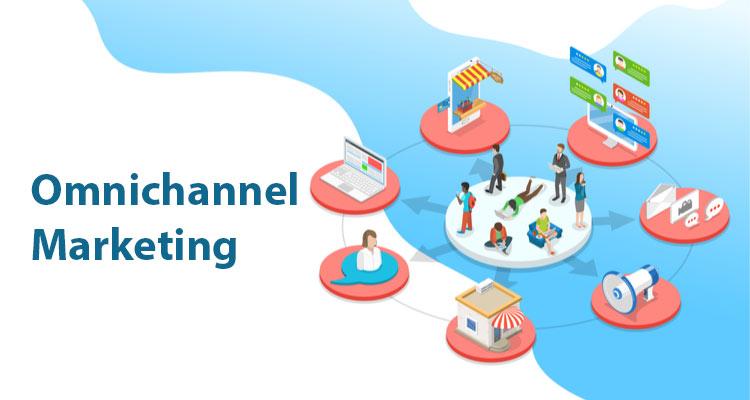According to TrueList, the average customer uses eight touchpoints before they convert.
A touchpoint is any physical or digital medium prospective customers use to interact with a brand. Establishing frictionless transitions from one touchpoint to another enhances the omnichannel customer experience and increases the chances of conversion, which is exactly what omnichannel is about. But how does omnichannel apply to marketing?
This article defines omnichannel marketing, shows real-life use cases, and explains how to develop an omnichannel marketing strategy you can use to grow your business.
What is Omnichannel Marketing?
Omnichannel marketing is the practice of delivering personalized, brand-consistent, and device-agnostic marketing collateral across multiple interconnected channels.
The key features of omnichannel marketing are consistency in branding and the transfer of data across all channels and touchpoints. Omnichannel marketing requires a single database which is powered by data collected from and used by all channels and touchpoints.
Let us assume a customer sees a product ad on Instagram, clicks on it, creates a member account on the ecommerce site, and adds the product to their wish list. Because of all these actions, an omnichannel platform now knows that the customer:
- Uses Instagram.
- Is looking for a particular type or brand of products.
When the customer creates a member account, they also provide an email address or phone number – another channel the brand can use to reach that customer.
The more a customer interacts with a brand, the more personalized their experience gets, and that is the true goal of omnichannel.
Omnichannel Marketing vs. Multichannel Marketing
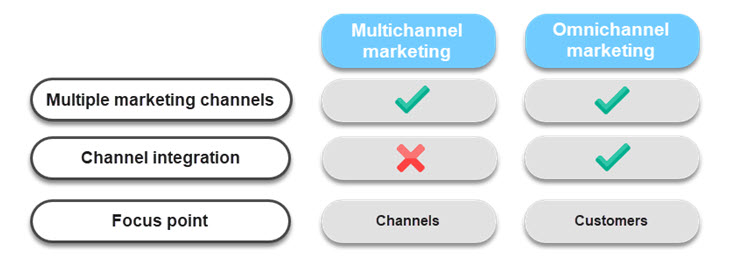
In multichannel marketing, each channel represents a separate customer journey. The focus is on the availability of multiple channels and making them work flawlessly as separate silos.
In omnichannel marketing, all channels are connected, allowing the customer to freely choose a journey that works best for them.
Note: Read our article to learn what an omnichannel customer journey is and how to optimize it. Also check out our Omnichannel vs Multichannel article to learn the difference between.
What is Omnichannel Attribution?
Omnichannel attribution is the holistic analysis of all elements of the marketing mix (product, price, place, promotion) with the purpose of determining how each one affects customer behavior.
The result of this analysis gives insight into the following:
- Why well-performing touchpoints drive conversions.
- Which touchpoints require optimization.
- Which touchpoints will not benefit from optimization and should be removed.
Well-performing touchpoints can be used to optimize other touchpoints, resulting in cohesion between touchpoints and channels. On the other hand, poor-performing touchpoints serve as an example of what to avoid.
The Benefits of an Omnichannel Marketing Strategy
The following are reasons why you should develop and implement an omnichannel marketing strategy:
- Larger revenue – Research by Harvard shows that the more channels customers use, the greater their customer lifetime value (CLV). In fact, customers who use 4+ channels spend up to 10% more money per purchase.
- Easier data collection and analysis – A single platform collects data from all channels. This makes analysis easier and enables the creation of personalized customer experiences.
- Personalized experiences across all channels – Omnichannel marketing delivers personalized marketing content across all channels, improving customer engagement and boosting loyalty
- Better user experience (UX) – Personalized experiences and seamless transitions between marketing channels lead to a better user experience overall.
- Increased customer loyalty – Consistent branding and accurate data across different channels invoke a sense of trust and loyalty in customers.
Note: Learn more about Omnichannel benefits or if you want to further improve customer loyalty, find out what the best loyalty programs for online shops are.
How to Develop an Omnichannel Marketing Strategy

Omnichannel marketing strategies have two prerequisites:
- A customer-oriented mindset – Omnichannel puts customer satisfaction first. Every change in your marketing strategy must be introduced with the customer’s best interest in mind.
- Sufficient technological capacities – When a business adopts an omnichannel approach, all departments, from sales to customer support, rely on a single platform. To perform well, omnichannel platforms must meet certain technical prerequisites. These requirements vary from platform to platform and depend on the specifics of the ecommerce.
Note: Read our article to learn more about omnichannel platforms.
Once these requirements are met, the process of developing an omnichannel marketing strategy consists of several steps, outlined below.
Make Sure Your Website's Design is Responsive

All marketing collateral you post, from the ads you serve to the content on your social media platforms, will eventually lead to your brand’s website. Since the website is the main conversion point for your brand, it must look good and perform as expected on any device a customer might use.
Responsive web design ensures your online shop resizes according to the device being used while keeping all functionality.
Emphasize the importance of website responsiveness to your development team. Have the website periodically tested to ensure it displays correctly across all devices, be it a smartphone, tablet, PC, gaming console, or smart TV.
Note: Learn how to build an ecommerce website.
Determine Your Target Audience’s Preferred Channels

Social and entertainment platforms can be categorized based on the age of most of their users. Younger audiences prefer Instagram, Snapchat, and TikTok, while older audiences spend more time using Facebook and Pinterest.
Social listening and social media analytics are powerful tools that help determine the demographic of your online audience. However, your marketing campaign should not be for the masses but for your ideal buyer, also known as a buyer persona.
Create a buyer persona and compare it with the data you get from social listening and social media analytics to determine your target audience’s preferred channels.
Create a Customer Journey Map

Creating a customer journey map is of utmost importance for any omnichannel business. Being a visual representation of all touchpoints and their connections, a customer journey map is an indispensable tool used for quality assurance and optimization of the customer journey.
Create a customer journey map, use it to test different journeys, and take note of any touchpoints that are bad performers, redundant, or irrelevant to the stage of the customer journey.
After testing, determine whether the touchpoints should be optimized, shifted, or removed altogether.
Create Channel-Relevant Content

Social platforms have led to the natural grouping of audiences based on their favorite type of content. Consequently, it is important to promote the right content on the right platforms.
TikTok, the favorite app of younger audiences, is the go-to platform for short, creative, and dynamic video ads. Instagram, although treading in TikTok’s steps, is still predominantly an image-sharing platform with commercial solutions and integrations, making it the best choice for ecommerce marketing.
The popularity of TikTok and Instagram has led to the creation of influencer marketing – the easiest but most expensive way to build social proof.
While creating marketing collateral, combine marketing and channel-relevant trends to make the most of every channel.
Common Omnichannel Marketing Mistakes and How to Avoid Them
Brands realize that going omnichannel is a necessity, but the slightest mistake could achieve the opposite effect than the one hoped for.
Here are some of the most common mistakes brands make when they try to implement an omnichannel marketing strategy and how to avoid them.
Implementation Failure

There are three reasons why omnichannel marketing strategy implementation can fail:
- Insufficient technological resources – Failing to meet the technical requirements of omnichannel platforms results in poor channel integration, which further leads to customer frustration and causes them to consider your competitors.
- Multi-channel organizational structure – In omnichannel marketing, channels are not separate silos anymore – they are interconnected and require support from an equally cohesive team. Company restructuring and employee training are necessary to ensure proper omnichannel implementation.
- Misaligned goal – Implementing an omnichannel marketing strategy means shifting the focus from short-term goals (sales and profit) to long-term goals (engaging customers, providing value, building loyalty). A customer-centric strategy does not work on business-centric brands.
How to avoid implementation failure:
- Adopt a customer-centric approach and ensure all employees share the company vision and goals.
- Invest in the necessary technological resources before you start omnichannel implementation.
- Restructure your company so that it fits a flexible omnichannel approach.
- Train employees so that they understand how omnichannel works and embrace the workflow.
Missed Personalization Opportunities

None of the data collected through omnichannel marketing has any worth if brands don’t use it to provide personalized ecommerce services. Missing personalization opportunities leads to the loss of:
- Potential upsells and cross-sells – These sales techniques only work if you know your customers and can personalize product recommendations. If customers are looking for hiking equipment, they are unlikely to be interested in a premium kitchen appliance or a skincare bundle.
- Existing customers – According to Salesforce, 52% of customers always expect personalized customer service. Customers who do not receive personalized service feel misunderstood and will switch to a competitor that can meet their expectations.
How to include more personalization in your marketing strategy:
- Explore personalization opportunities, such as cart abandonment emails, exclusive offers, personalized product recommendations, etc.
- Ensure all channels use the collected user data to create personalized offers.
Poor Analytics

In the past, brands measured their success by looking at the number of sales, profits, and turnover. Today, marketing and sales analytics are far more complex – they go beyond crude numbers and investigate the deeper reasons behind conversion.
Customers look for value in brands. In omnichannel, that value is provided long before a sale occurs. Value takes the form of:
- Relevant and engaging content (e.g., 10 gift ideas for your significant other)
- Personalized experiences (e.g., makeup recommendations based on a person’s skin tone and hair color
- Social proof (e.g., reposts of user-generated content)
How to approach omnichannel marketing analytics:
- Focus on providing long-term value instead of gaining short-term profit.
- Combine marketing, sales, and internet marketing KPIs (conversion rates, customer retention, customer lifetime value, bounce rates, session length) to learn more about the value your customers get from your brand.
- Collect, analyze, and react to customer feedback.
Note: Learn everything you need to know about tracking ecommerce KPIs.
Avoiding Optimization
Change is inevitable, be it in customers’ needs or the marketing technologies at your disposal
The success of an omnichannel marketing strategy relies heavily on KPI tracking, analysis, and optimization to adapt to these frequent changes. These methods help locate issues in the current strategy and spotlight opportunities for improvement in future marketing efforts.
How to optimize your omnichannel marketing strategy:
- Employ analysts with experience in omnichannel marketing.
- Invest in analytics software.
- Escalate any issues that arise to the right department.
Omnichannel Marketing Examples
Explore these successful omnichannel examples and see which aspects of these strategies could work for your brand.
McDonald's
McDonald’s implements both traditional and digital means in their omnichannel marketing campaigns, but one of them that truly shines is the McDonald’s mobile app, which provides:
- Nutritional information about available food and drinks
- Additional coupons
- Limited-time exclusive deals
- A map with restaurant locations
- Fun facts about the restaurants in your state
The omnichannel aspect of these marketing efforts is the fact that customers use physical or digital coupons to order in-person, via the website, or through the mobile app. Post-purchase engagement is achieved through special survey access codes on the bill, which customers can use to answer questions and get a reward.
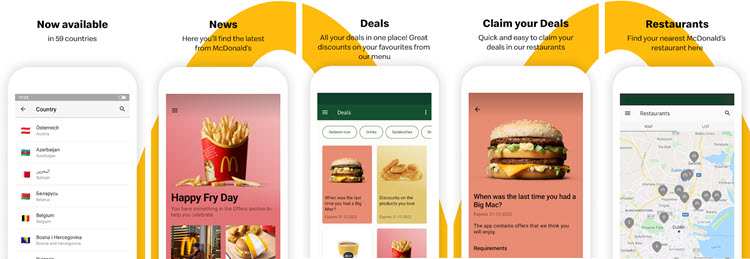
Home Depot
Home Depot designed a mobile app that serves a customer regardless of their location. In-store, the app serves as a product locator, telling the customer in which aisle and shelf the desired product is located.
If not in-store, customers can use the app to:
- Check product availability
- Make an order
- Check the status of their order
- Contact customer support
- Take photos of household items to see whether Home Depot offers similar products
What makes this approach from Home Depot omnichannel is the seamless integration of digital and physical.
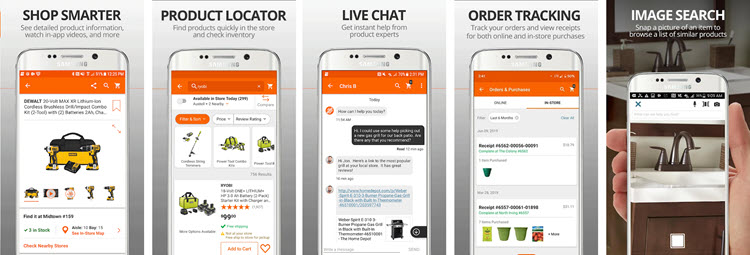
Sephora
Sephora’s main selling point are in-store beauty advisors who provide skincare and makeup tips and offer full makeovers. Translating the experience to the digital realm is difficult, but Sephora achieves this via the Sephora Visual Artist. This handy feature allows customers to upload a photo and virtually try on a product.
The advice customers get is the kind of experience and added value omnichannel marketing aims to provide.
The Sephora Visual Artist is available on the Sephora app, which also offers:
- App-only deals
- Loyalty rewards
- Free birthday gifts
Customers also use the app to order Sephora products for delivery or pick-up.
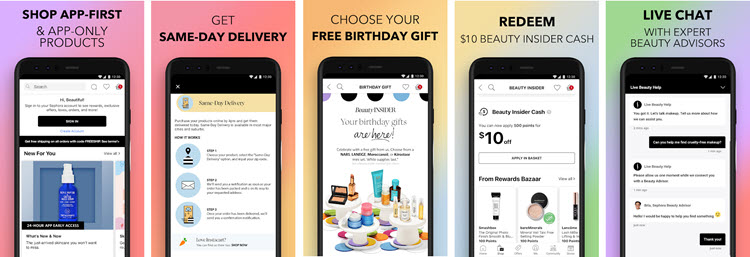
Note: For more marketing tips, refer to our article on how to develop a successful ecommerce marketing strategy.
Conclusion
Omnichannel marketing puts the customer experience in the spotlight. This has caused customers to subconsciously expect omnichannel shopping experiences
Ecommerce and retail are highly competitive industries, but a creative omnichannel marketing strategy draws attention to a brand and makes it stand out among the competition.
Use this guide to determine whether you are ready to adopt an omnichannel approach to marketing and develop the best strategy for your brand. Also, feel free to check out our Omnichannel trends article, to learn about the the trends to watch out for.
